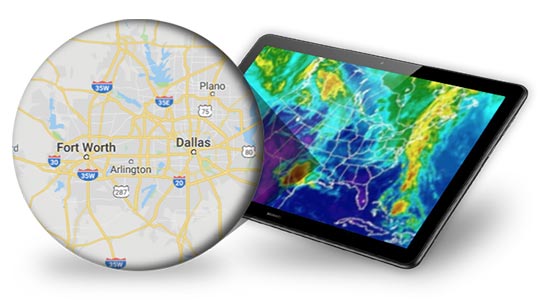24/7 Emergency Services
November 2017:

One of our authors was in Florida durning Hurricane Irma - his relatives, friends and neighbors reported that restoration companies seemed to be appearing in waves the day after the winds died down. Some companies brought competent contents teams, many did not.
The shared belief seemed to be, “We are coming to dry out the structures (and there are a lot of them), sorting through the debris will only slow us down.”
But the onsite contents pros soon turned those kids of thoughts around. First of all, the adjusters liked to see the contents managers because the homeowners and business owners stricken by the storm needed photo evidence that the adjuster could use to verify damage and complete his (her) own estimates.
Within minutes of arrival, the contents pros are taking pictures of every room impacted by the wind and flood damage. Often they perform a “walk through” with the owner next to them, getting images from each of the four walls, the tops of dressers, and important, expensive or damaged valuables and antiques. These form a basis for their own estimates and all such images are happily shared with agents, adjusters and owners.
Trained contents professionals also know dozens of money saving techniques and strategies for flood distressed items. As an example, they bring hard foam blocks to reals couches, tables and chairs out of standing water so the moisture doesn’t have a chance to “wick up” and ruin a restorable piece of furniture. And they have the knowledge of how to move such furniture to a safe place for restoration (you may recall an article in an earlier issue of Contents Solutions in which we told the story of untrained workers who used plastic wrap to protect fragile antique tables and chairs, only to find the wrap shrinking and literally pulling the joints of the pieces apart).
And there are structural workers and untrained contents people who may attempt to dry out wood furniture with directed heat or by placing it in a headed room. Sounds like a good idea until you realize that there are decided disadvantages to such methods. The main one being that when wood is dried too quickly, or too much moisture is pulled from it, the wood actually beings to crack and split - these cracks cannot be repaired by replacing the moisture or coating with wax.
They are permanent.
The contents specialists save carriers small fortunes on most jobs- and when it comes to restoring valuables from hurricanes, floods, tornados or other natural disasters, suddenly they are numbered among the most valued restoration professionals on the job!
And that is even before they are asked to prevent mold growth and bacterial infestation. Structural workers move things out of the way. The contents pros move items to safety.
WET ELECTRONICS RESTORED BY THE CONTENTS PROS
When electronics get wet, there is a very narrow window of opportunity to restore them. One industry writer said it rather succinctly, “Corrosion can be stopped, not reversed.”
And perhaps hurricane flooding is among the worst case scenarios. As an example, Harvey and Irma came in from the Gulf of Mexico, which is saturated with salt and other circuit-shorting minerals. And “storm surge” is the Gulf itself being pushed inland.
Still, one contents restoration company that is in Houston right now reports, “Our technicians know how to rebuild more than 80 percent of electronic devices that have been ruined and are caught up in insurance claims and other losses. Our professionals’ expertise can save otherwise lost data and recover laptops and other devices in as little as 24 hours.”
And another, nationwide firm says, “…many times [electronic] equipment can be fully restored and returned to quick use by the insured at only 25%-35% of replacement costs!”
Many contents companies now have electronics restoration washing stations. Those that don’t, keep the best electronics restoration firms in the area close (in their million dollar data base). Wet electronics can often be restored by the modern contents pros - it is all a matter of how fast they can get to the items in question.
FLOOD DAMAGE INSURANCE
CONTENTS PROS KNOW!
Some homeowners know that their property insurance does not cover flood damage. Some do not. And those who purchase flood insurance (NFIP) often assume that anything not covered by their property insurance, is covered by NFIP durning a flood.
Most adjusters know what is covered and what is not, many homeowners simply don’t. As an example, personal belongings such as clothing, furniture, and electronic equipment are normally covered. So are cabinets that are affected by the flood (but not ones right next to them that were unaffected). Clothes washers and dryers are covered, but if you have a refrigerator in a sub-level of the house, it is not covered, even though the freezer right next to it is!
Currency, stocks and bods are not covered. And “most personal property such as clothing, electronic equipment kitchen supplies, and furniture,” in your basement family room is not covered either. Clothes, comforters, blankets and other personal valuables may have been covered upstairs, but not if they were stored in the basement. Who knew? The contents project managers do. Just another reason they are so valuable to adjusters, agents and property managers on any flood damage job.
DRYING BAGS AMAZING TOOLS
Have you heard about the new “drying bags” that can pull moisture from all small electronic devices, from smart keys to watches, cellphones to garage door openers and more?
Well, the contents pros have! There is even a larger size that can dry out tablets, small laptops, iPads, and a whole lot more.
From what we have read, the bags have “micro-beads” that target water and trap it. Then, as the humidity of the air in the bag decreases, the moisture in the electronic device is pulled into the beads of transforms into a gaseous form until all the water is absorbed by the beads. And the strange thing is that instead of releasing the moisture out of the bag, we keep it sealed for 2 to 3 days until the client’s device is completely dry.
It is a clever addition to our “storm selection” of emergency equipment for contents jobs. In the past we used desiccants and in an urgent situation, where nothing else was available, we might have resorted to burying a cell phone in rice (an old internet trick). But their manufacturer promise the beads and the bag, “…work up to 7000% better than rice at removing moisture from electronics! Incredibly absorbent and reusable!”
No dust to affect electronics, no chemicals to corrode fragile circuits. And as good as these are, they are just a clever addition to our formidable technologies. You can count on us to find new, innovative ideas to save your carrier significant sums on virtually every job!
These bags are just “first aid.” Wait until you see what we can do when we focus our team and training on your next assignment.
COLLEGE WOES AND CONTENTS PROS
When a state college in Florida was flooded (more than 26 inches of rain fell in 24 hours - flood waters rose from six inches to four feet) ten buildings were affected - including a library.
More than 750 workers were brought in to dry and sanitize, while the contents pros filled almost 130 mobile storage units with packed out items. But everyone knew how devastating hot, humid air could be to the college’s valued articles when sealed up in a closed chamber, so humidity and climate control measures were used to protect everything in the metal storage containers.
All the restored books (some had to be discarded) were returned to their exact places on the shelves in pre-loss condition.
We suspected that digital photo inventory played a great part in getting the books back where they belonged!
No job is too big for the contents professionals. No job is too small to be beneath their notice!










